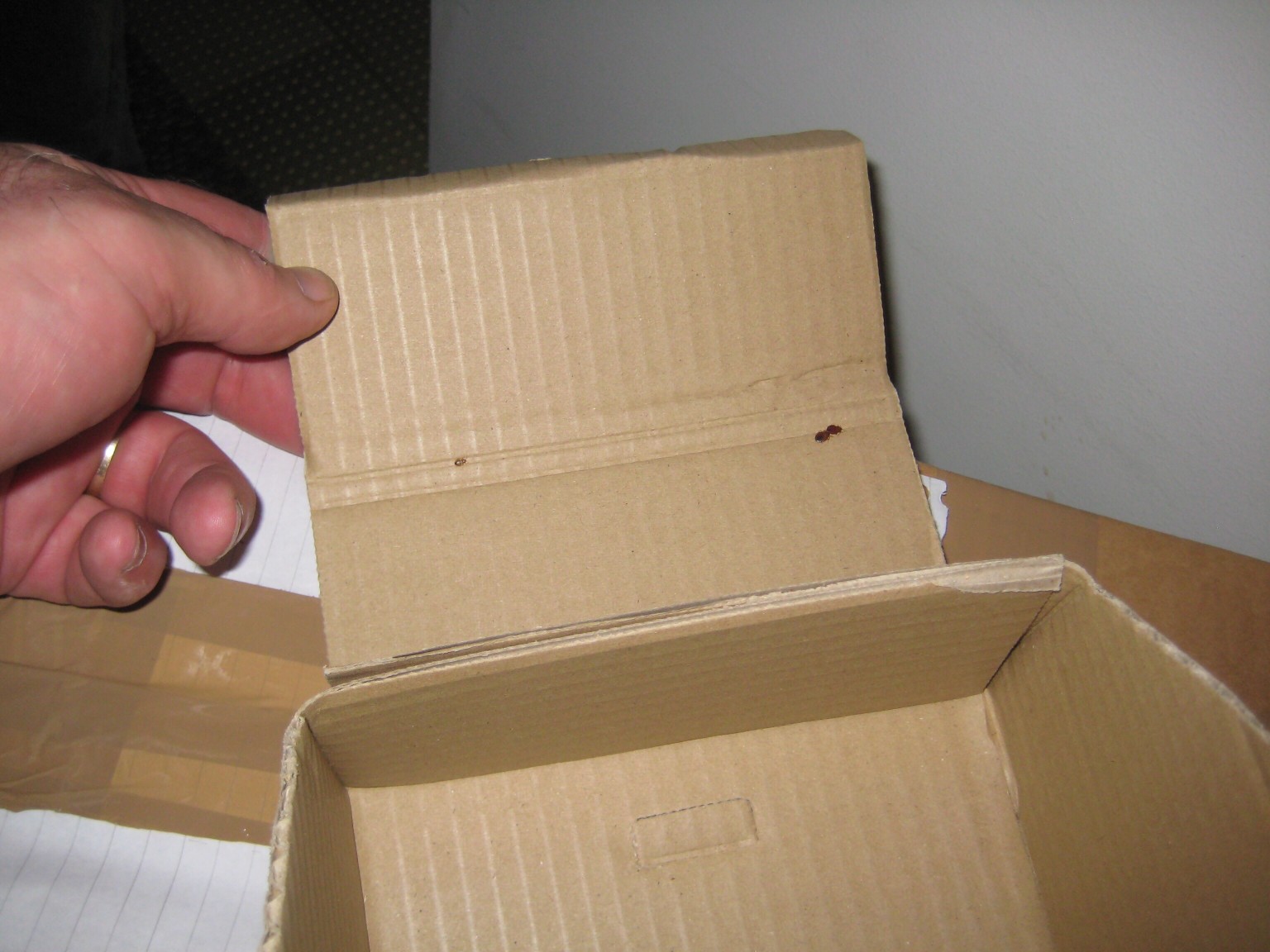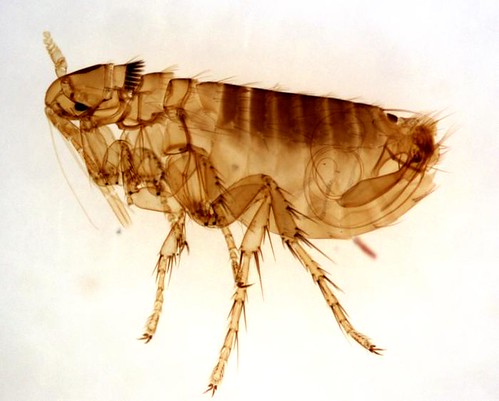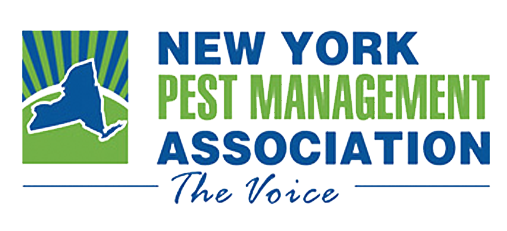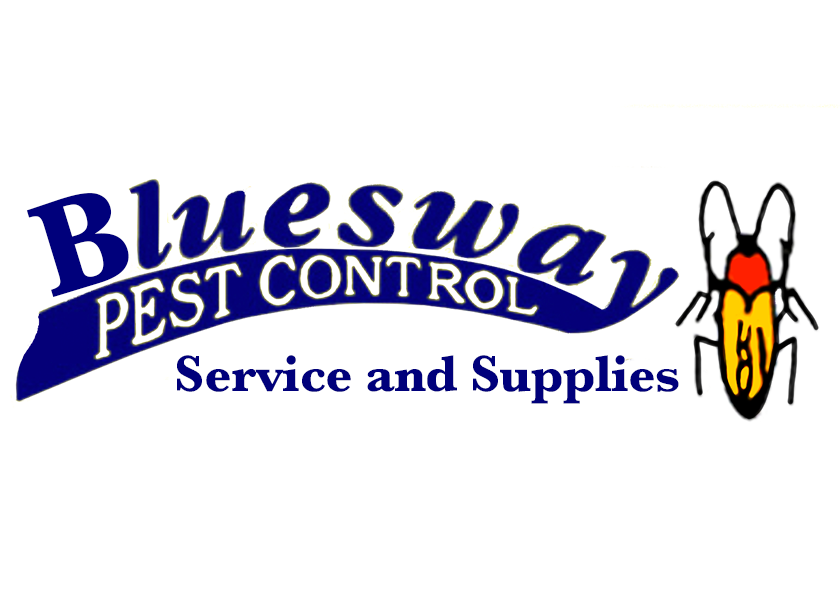Biting Insect
Identification & Prevention
Bed Bugs
Once bed bugs have invaded your home, they can be a little difficult to eliminate. Their habits, size and hardy nature help contribute to their persistence in homes and apartments that they have invaded. An adult bed bug is about 1/4 of an inch long. This small body size helps this pest to hide in areas that make their elimination difficult.
Bed bug nymphs react to pest control products more readily than their adult counterparts, but like the adults they can go for long periods without food. Blood taken from humans is the preferred food of young and adult bed bugs.
Bed bugs are not seen crawling around during the daylight hours where they would be easily identified. They hide in various areas during the day and come out at night to feed on human blood. Actually, the carbon dioxide we exhale during the night attracts them and the host (you) does not see or feel their presence. An obvious sign of a bed bug infestation in a room can be the presence of small drops of blood on mattresses sheets and/or pillowcases.

How To Find Bed Bugs
These tiny bugs can be found in small cracks in proximity to where humans rest or sleep. These cracks and crevices are generally behind and beneath baseboards, underneath area rugs, between carpeting and walls, in power areas of appliances or even in the folds of curtains and drapes.
Thorough vacuuming of cracks, crevices and other areas where bed bugs hide is an essential part of a pest management program targeting this particular pest, but please don’t forget to throw out the vacuum bag.
In addition, you must wash and dry ALL of your clothing—this means everything—and place the clean items inside plastic bags, preferably outside your apartment or house, until after the treatment is performed.
Also, mattresses and box springs are often the main hiding places of a bed bug infestation. The decision to discard or treat them is based on the level of infestation and nature of the client.
Whether the bed stays or goes, covering both the mattress and box spring with a zippered encasement deny bed bugs access to inner hiding areas and also entraps them inside. Otherwise, bed bugs may dislodge during transport and spread to other areas. This is why it is imperative to contact professionals in this matter, as you do not want to risk further infestation in the house.

Prevention Is Best for Bed Bug Control
There are a few ways to handle treatment options when it comes to controlling bed bugs. This depends on the extent of the infestation. It is important to remember that in order for a new infestation to become established, bed bugs must first be introduced into the previously un-infested environment.
The best way to prevent a bed bug infestation is to avoid the activities that place you at risk for an infestation. Some activities are easier than others to avoid. For example, it is much easier to avoid purchasing used items than it is to eliminate travel, having overnight guests, or sending children off to summer camp or college.
On the other hand, it is much easier to never pick up items that have been discarded curbside or purchase used or second-hand bedding or furniture. There is no question that awareness of bed bug risk factors is the first step in avoiding an infestation.
The Importance of Early Detection
Early detection of bed bug activity is among the most important ways that you can protect yourself from a bed bug infestation nightmare that is difficult and costly to eliminate. The use of mattress and a box spring encasement is one of the most economical and useful tools that can aid in the early detection of bed bugs.
It is very important that the encasement has been specifically designed for bed bugs and have been scientifically tested to demonstrate their effectiveness. By encasing mattresses, any bed bugs that may be introduced are restricted to the exterior of the encasement where they can be readily detected through a good visual inspection.
In addition, mattress and the box spring encasement can also prevent the infestation of the mattress and box spring should bed bugs be introduced.

Fleas
Fleas are wingless insects (1/16 to 1/8-inch (1.5 to 3.3 mm) long) that are agile, usually dark colored (for example, the reddish-brown of the cat flea), with tube-like mouth-parts adapted to feeding on the blood of their hosts. Their legs are long, the hind pair well adapted for jumping: a flea can jump vertically up to 7 inches (18 cm) and horizontally up to 13 inches (33 cm), making the flea one of the best jumpers of all known animals (relative to body size), second only to the frog-hopper.
According to an article in Science News, “researchers with the University of Cambridge in England have shown that fleas take off from their tibiae and tarsi—the insect equivalent of feet—and not their trochantera, or knees. The researchers report their conclusion in the March 1 Journal of Experimental Biology.” It has been known that fleas do not use muscle power but energy stored in a protein named resilin, with researchers using high-speed video technology and mathematical models to discover where the spring action actually happens.
Their bodies are laterally compressed, permitting easy movement through the hairs or feathers on the host’s body (or in the case of humans, under clothing). The flea body is hard, polished, and covered with many hairs and short spines directed backward, which also assist its movements on the host.
The tough body is able to withstand great pressure, likely an adaptation to survive attempts to eliminate them by mashing or scratching. Even hard squeezing between the fingers is normally insufficient to kill a flea. However, rolling them back & forth a dozen times disables their legs and they die.
Life Cycle of Fleas
Fleas lay tiny white oval-shaped eggs better viewed through a loupe or magnifying glass. The larva is small and pale, has bristles covering its worm-like body, lacks eyes, and has mouth-parts adapted to chewing.
The larvae feed on various organic matter, especially the feces of mature fleas. The adult flea’s diet consists solely of fresh blood. In the pupa phase, the larva is enclosed in a silken, debris-covered cocoon.
Fleas are holometabolous insects, going through the four life cycle stages of egg, larva, pupa, and imago (adult). Adult fleas must feed on blood before they can become capable of reproduction. Flea populations are evenly distributed, with about 50% eggs, 35% larvae, 10% pupae, and 5% adults.

Eggs
The flea life cycle begins when the female lays after feeding. Eggs are laid in batches of up to 20 or so, usually on the host itself, which means that the eggs can easily roll onto the ground. Because of this, areas where the host rests and sleeps become one of the primary habitats of eggs and developing fleas. The eggs take around two days to two weeks to hatch.
Larvae
Flea larvae emerge from the eggs to feed on any available organic material such as dead insects, feces, and vegetable matter. In laboratory studies, some dietary diversity seems necessary for proper larval development. Blood only diets allow only 12% of larvae to mature, whereas blood and yeast or dog chow diets allow almost all larvae to mature. They are blind and avoid sunlight, keeping to dark places like sand, cracks and crevices, and bedding.
Pupae
Given an adequate supply of food, larvae will pupate and weave a silken cocoon within 1–2 weeks after 3 larval stages. After another week or two, the adult flea is fully developed and ready to emerge from the cocoon.
They may remain resting during this period until they receive a signal that a host is near – vibrations (including sound), heat, and carbon dioxide are all stimuli indicating the probable presence of a host. Fleas are known to overwinter in the larval or pupal stages.
Adult flea
Once the flea reaches adulthood, its primary goal is to find blood and then to reproduce. Their total life span can be as short as one year, but may be several years in ideal conditions. Female fleas can lay 5000 or more eggs over their life, allowing for phenomenal growth rates. Average 30–90 days.
A flea might live a year and a half under ideal conditions. These include the right temperature, food supply, and humidity. Generally speaking, an adult flea only lives for 2 or 3 months. Without a host, for food a flea’s life might be as short as a few days. With ample food supply, the adult flea will often live up to 100 days.
Newly emerged adult fleas live only about one week if a blood meal is not obtained. However, completely developed adult fleas can live for several months without eating, so long as they do not emerge from their puparia. Optimum temperatures for the flea’s life cycle are 21 °C to 30 °C (70 °F to 85 °F) and optimum humidity is 70%.
Adult female rabbit fleas, Spilopsyllus cuniculi, can detect the changing levels of cortisol and corticosterone hormones in the rabbit’s blood that indicate it is getting close to giving birth. This triggers sexual maturity in the fleas and they start producing eggs.
As soon as the baby rabbits are born, the fleas make their way down to them and once on board they start feeding, mating, and laying eggs. After 12 days, the adult fleas make their way back to the mother. They complete this mini-migration every time she gives birth.
Ticks
Ticks are small blood-sucking arthropods. They are classified in two families, Ixodidae (hard ticks) and Argasidae (soft ticks), each containing different genera and species of ticks.
Ticks are the leading carriers of vector-borne diseases to humans in the United States, second only to mosquitoes worldwide. In most circumstances, it is not the tick bite but the toxins, secretions, or organisms in the tick’s saliva transmitted through the bite that cause disease.

Ticks (and mites) are arthropods, like spiders; all three belong to class Arachnida. There are more than 800 species of ticks throughout the world. Many organisms that bite humans for a blood meal are not ticks and should not be confused with ticks.
Some common examples are mosquitoes, bedbugs and fleas (these are insects, not arthropods). If it is possible to bring into the doctor’s office what has caused a “bite,” the physician may be able to determine what potential vector caused the “bite.”
Exterminating Services Estimate
Bluesway Pest Control provides dependable and affordable biting insect control such as bed bugs, fleas, and ticks, and other pests exterminating services.
For more information, please contact us today. We will gladly answer any questions or concerns you may have regarding our exterminating services. We can also provide you with a free estimate for our services.
“They were so nice and got the job done. After one spray and I can already tell the huge difference it made on my property. I now have them come once a month. The men were very great at explaining everything that needed to be done and the whole team was very friendly. I now finally have my plants back. Extremely happy!”
Almedina P.
Get Started with Bluesway Pest Control Today!
(914) 968-8404
We have a loyal client base in communities like Yonkers, Mount Vernon, New Rochelle, White Plains, Scarsdale, Dobbs Ferry, Eastchester, Port Chester, Rye, and all throughout Westchester, including Rockland County and parts of New York City.







Bluesway Pest Control
320 Saw Mill River Road
Yonkers, NY 10701

Copyright © 2022 Bluesway Pest Control – All Rights Reserved.
